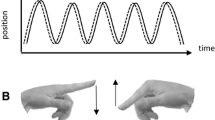Abstract
The developmental status of the communicatory behavior of 11 autistic children was assessed. Children were observed during free play sessions under two conditions: (a) when teachers were present to direct the children's behavior and (b) when teachers were absent and the children played among themselves. Mean changes in the children's communicatory behavior were measured over time (8 months) using the behavior scale designed for this study. The relationship between the developmental status of the children's communicatory behavior and standardized measures of their social and cognitive functioning (e.g., IQ, Vineland Social Age) was also assessed. The results revealed that the quantity and social quality of autistic children's communicatory behavior were greater in the teachers' presence than in their absence and that the symbolic and social quality of the children's communicatory behavior increased over 8 months. Also, positive correlations were found between social and symbolic levels of communication and standardized tests of social and cognitive functioning. The implications of these findings for the assessment of autistic children are discussed.
Similar content being viewed by others
References
Bates, E.Language and context. New York: Academic Press, 1976.
Bates, E., Benigni, L., Bretherton, I., Camaioni, L., & Volterra, V. From gesture to the first word: On cognitive and social prerequisites. In M. Lewis & R. A. Rosenblum (Eds.),Interaction, conversation and the development of language. New York: Wiley, 1977.
Bruner, J. S. From communication to language—a psychological perspective.Cognition, 1974/1975,3, 255–287.
Bruner, J. S. The ontogenesis of speech acts.Journal of Child Language, 1975,2, 1–19.
Carter, A. The transformation of sensorimotor morphemes into words: A case study of the development of “more” and “mine.”Journal of Child Language, 1975,2, 233–250.
Freeman, B. J., & Ritvo, E. R. Current status of biochemical research in autism.Journal of Pediatric Psychology, 1977,2, 149–152.
Harding, C. G., & Golinkoff, R. M. The origins of intentional vocalizations in prelinguistic infants.Child Development, 1979,50, 33–40.
Lock, A.Action gesture and symbol: On the emergence of language. New York: Academic Press, 1978.
Piaget, J.The construction of reality in the child. New York: Ballantine, 1954.
Schopler, E., & Reichler, R. J.Individualized assessment and treatment for autistic and developmentally disabled children. Vol. 1. Psychoeducational Profile. Baltimore: University Park Press, 1979.
Schopler, E., Reichler, R. J., DeVellis, R. F., & Daly, K. Toward objective classification of childhood autism: Childhood Autism Rating Scale (CARS).Journal of Autism and Developmental Disorders, 1980,10, 91–103.
Sigel, I. E. The distancing hypothesis: A causal hypothesis for the acquisition of representational thought. In M. R. Jones (Ed.),Miami symposium on the prediction of behavior 1968: Effects of early experience. Coral Gables, Florida: University of Miami Press, 1970.
Wing, L., Gould, J., Yeates, S. R., & Brierly, L. M. Symbolic play in mentally retarded and autistic children.Journal of Child Psychology and Psychiatry, 1977,18, 167–178.
Author information
Authors and Affiliations
Additional information
This research was supported by a grant from the Spencer Foundation. The preparation of this report was also supported in part by the Bureau of Education for the Handicapped, U.S. Office of Education, DHEW, Contract Number 300-77-0309. However, the opinions expressed do not necessarily reflect the position or policy of the U.S. Office of Education, and no official endorsement by the U.S. Office of Education should be inferred. Portions of this research were presented at the annual meeting of the American Association on Mental Deficiency, Miami, May 1979. The authors wish to thank the teachers involved in this study, Susan Boswell, Bob Foster, Mary Harmon, Karen Lovejoy, Faye Williams, and Marian Wooten, and research assistants Patricia Dockery, Ann Hager, and Chickery Kasouf.
Rights and permissions
About this article
Cite this article
McHale, S.M., Simeonsson, R.J., Marcus, L.M. et al. The social and symbolic quality of autistic children's communication. J Autism Dev Disord 10, 299–310 (1980). https://doi.org/10.1007/BF02408289
Issue Date:
DOI: https://doi.org/10.1007/BF02408289




